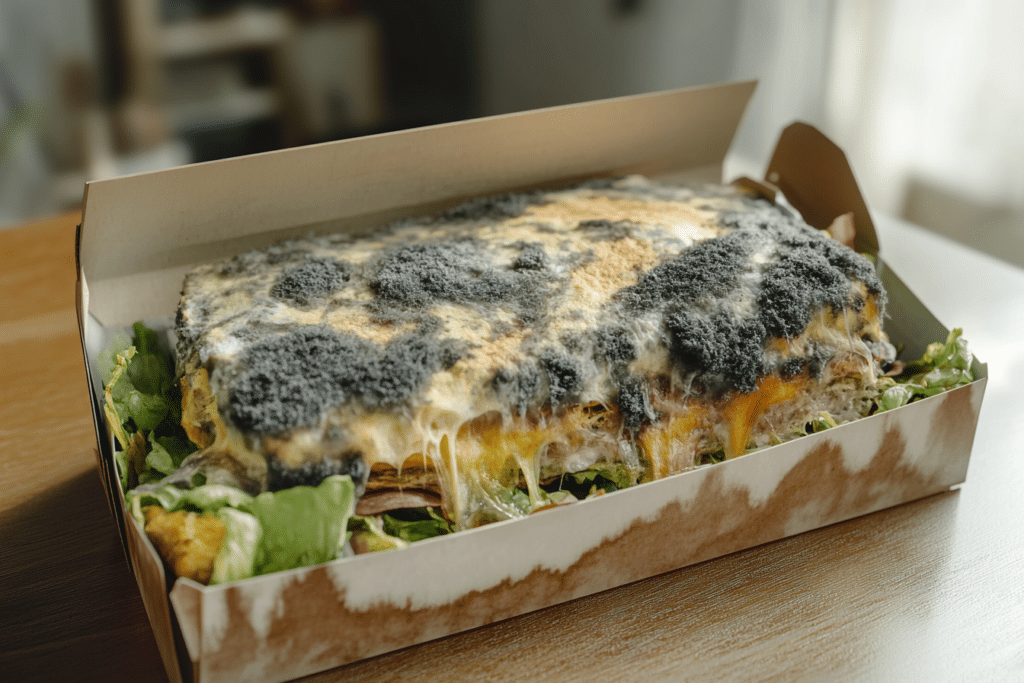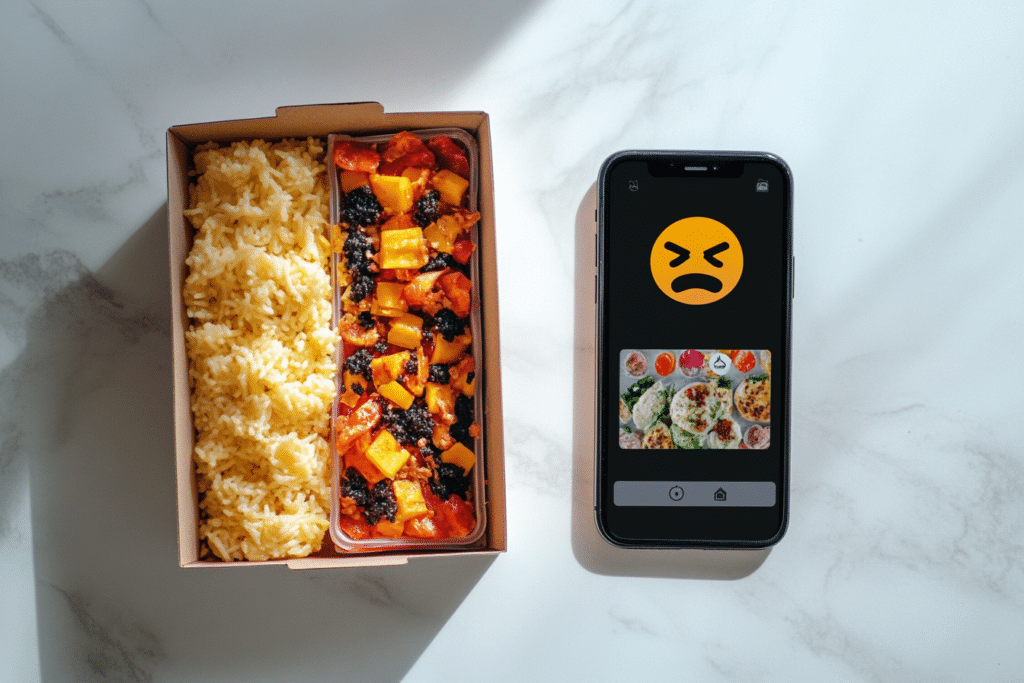1. Introduction into What is the Controversy with Lunchly?
Lunchly, a name that once symbolized accessible and nutritious meal delivery solutions, has become embroiled in controversy. What began as a promising venture backed by high-profile personalities like MrBeast, Logan Paul, and KSI, has turned into a storm of allegations, tarnishing the brand’s reputation.
The central question today is: What is the controversy with Lunchly? The issue revolves around reports of mold contamination, unsatisfied customers, and a lack of clear communication from the company. These factors have ignited debates across social media and industry circles, raising concerns about quality control in the food delivery market.
In this article, we’ll examine Lunchly’s background, explore the controversy in detail, and provide insights into the lessons it offers to both consumers and industry players.
2. What is the Controversy with Lunchly and How Did It Begin?
2.1 Key Events in the Controversy with Lunchly Timeline
Lunchly was launched with the ambitious goal of making quick, healthy meals accessible to a wide audience. Backed by popular figures like MrBeast, the brand entered the market with significant fanfare. Its innovative subscription model and convenient delivery service made it a favorite among busy professionals and health-conscious customers.
However, the association with celebrity founders also led to heightened expectations. Lunchly wasn’t just a meal delivery service; it was a brand of trust and quality that relied heavily on its public image.
2.2 Market Impact Before the Controversy Controversy with Lunchly
Before the mold allegations surfaced, Lunchly was considered a game-changer in the food-tech industry. Its ability to cater to dietary preferences like keto, vegan, and gluten-free diets attracted a diverse customer base. With a well-designed app and a commitment to affordability, Lunchly gained a loyal following.
However, this rapid growth may have outpaced its ability to maintain strict quality controls—one of the potential factors behind its current challenges.
3. The Mold Controversy
3.1 What Sparked the Controversy?

The controversy with Lunchly began when customers started posting images of meals contaminated with mold on social media. Viral posts showcasing contaminated products, particularly those involving incidents like the Lunchly Mold Cheese Controversy, drew widespread attention, raising serious concerns about the company’s quality control practices.
Users described receiving meal packages that were not only moldy but also emitting foul odors. The hashtags #LunchlyMold and #LunchlyFails trended for days, amplifying the issue and capturing the attention of both consumers and the media. These posts quickly turned public perception against the brand.
“Imagine opening your lunch box to find mold growing on your food. This is unacceptable!” one Twitter user exclaimed, summing up the general sentiment.
3.2 Timeline of Events
The mold allegations first surfaced in mid-2024. Within days, dozens of similar complaints emerged, suggesting that this was not an isolated incident. Here’s a brief timeline of how the controversy unfolded:
- Week 1: Initial complaints appeared on social media, highlighting the issue of mold in pre-packaged meals.
- Week 2: Popular influencers began to comment on the situation, sharing their own experiences and calling for transparency from the company.
- Week 3: News outlets reported on the controversy, further exposing Lunchly’s quality control issues.
- Week 4: The brand issued its first response, which critics deemed insufficient and vague.
This escalation highlighted not just the scale of the problem but also the importance of quick, decisive communication during a crisis.
3.3 Response from Lunchly’s Team
In response to the uproar, Lunchly released a series of statements across its official channels. The initial statement apologized for the issue but failed to address the specific causes of the mold contamination. “We are investigating this matter thoroughly to ensure such incidents do not happen again,” the company wrote.
However, this apology was met with skepticism. Critics argued that the statement lacked transparency and failed to take full accountability for the lapses in quality control.
High-profile stakeholders like MrBeast and Logan Paul also weighed in. MrBeast, known for his philanthropic ventures, tweeted, “I’m deeply sorry for what’s happened. We’re working on fixing this ASAP. Your trust means everything to me.”
Despite this, the lack of immediate action left many customers frustrated. Competitors, on the other hand, began leveraging the situation to highlight their own superior quality standards.
3.4 FDA Involvement and Investigations
Adding fuel to the fire, reports emerged that the U.S. Food and Drug Administration (FDA) had issued warnings to Lunchly regarding their quality assurance practices. While details of these warnings remain limited, it has been confirmed that the FDA flagged Lunchly for failing to meet certain compliance standards.
This revelation raised serious questions about the company’s operational integrity. External reports from authoritative sources suggest that Lunchly might face legal action if significant improvements are not implemented soon.
4. Factors Contributing to the Lunchly Controversy
4.1 Quality Control Issues at the Heart of the Lunchly Controversy
One of the primary factors fueling the controversy with Lunchly is the apparent breakdown in quality control processes. As the company scaled its operations to meet growing demand, maintaining consistent product quality became a significant challenge. Reports suggest that inadequate oversight at production facilities led to lapses that allowed moldy meals to be shipped.
Several possible reasons for these quality issues include:
- Poor storage conditions during packaging or transit.
- Insufficient staff training on food safety standards.
- Weak supply chain management that failed to prioritize freshness.
These factors, combined with the company’s rapid growth, created a perfect storm for quality control failures. Such incidents erode consumer trust, especially in industries where health and safety are paramount.
4.2 Marketing Hype vs. Reality
The celebrity-backed promotion of Lunchly played a key role in building its brand, but it also set extremely high expectations. Influencers like MrBeast and Logan Paul painted a picture of Lunchly as a premium service, offering delicious, high-quality meals that were both convenient and nutritious.
However, the mold controversy revealed a stark gap between marketing claims and actual customer experiences. Some users reported receiving meals that were far from the appetizing images featured in Lunchly’s advertisements. This disconnect left customers feeling misled and betrayed.
When brands fail to live up to their promises, public backlash is inevitable. The controversy has demonstrated that no amount of celebrity endorsement can compensate for a lack of product reliability.
4.3 The Role of Social Media in Amplifying the Controversy
Social media played a pivotal role in spreading awareness about the Lunchly controversy. Platforms like TikTok and Twitter became arenas for dissatisfied customers to share their stories, amplifying the issue far beyond Lunchly’s initial customer base.
The impact of social media included:
- Viral Complaints: Posts with images of moldy meals gained millions of views, turning individual grievances into a public relations crisis.
- Community Discussions: Forums like Reddit became hubs for consumers to discuss their negative experiences, creating a collective narrative against Lunchly.
- Influencer Criticism: Even some influencers who had initially supported the brand began to critique its quality, further damaging its reputation.
This dynamic highlights how the digital age can magnify corporate missteps, making swift and effective crisis management more critical than ever.
5. Public Reaction to the Controversy with Lunchly
5.1 Customer Backlash

The controversy with Lunchly triggered an overwhelming backlash from customers. Many took to social media platforms to voice their frustrations, often tagging the company and its celebrity stakeholders to demand accountability. Complaints centered on:
- Health concerns due to receiving contaminated meals.
- Delays in processing refunds for affected customers.
- A lack of transparency in communication from Lunchly’s support team.
One customer tweeted, “Lunchly used to be my go-to for meal prep. Now, I can’t trust them. Mold in my food? Never again!”
The combination of health risks and perceived negligence led many customers to abandon the service entirely. Negative reviews began to dominate Lunchly’s online presence, affecting its reputation further.
5.2 Supporters’ Defense of Lunchly
Despite the backlash, Lunchly still has its share of defenders. Loyal fans argue that the mold incidents may have been isolated cases and that the brand’s overall track record shouldn’t be overshadowed by a single controversy. Some customers pointed to the company’s efforts to address complaints as a sign of its commitment to improvement.
A Reddit user commented, “Every brand has hiccups. Lunchly has apologized and is working to fix this. Let’s not cancel them completely.”
This division in public opinion underscores the polarizing nature of the controversy. While some consumers have written off Lunchly entirely, others remain hopeful for its redemption.
5.3 Influence of High-Profile Figures
The involvement of influential figures like MrBeast and Logan Paul has significantly shaped public perception during this controversy. As celebrity entrepreneurs, their association with Lunchly initially drew millions of customers to the brand. However, when the mold scandal surfaced, their involvement became a double-edged sword.
- MrBeast’s Response: As one of Lunchly’s most visible stakeholders, MrBeast publicly apologized for the incidents. His statement, while heartfelt, left some customers dissatisfied, as it didn’t outline concrete steps for addressing the issue.
- Media Criticism: Critics accused these celebrities of leveraging their fame to promote a brand without ensuring its quality.
The backlash against these influencers highlights the risks of celebrity endorsements in highly sensitive industries like food and health.
6. Lessons Learned from the Lunchly Controversy for the Industry
6.1 The Importance of Quality Assurance

The controversy with Lunchly serves as a stark reminder of the critical role quality assurance plays in food-related businesses. Consumers trust meal delivery services to prioritize their health and safety, making quality control non-negotiable.
Key lessons include:
- Regular Inspections: Companies must implement rigorous checks at every stage of production, from sourcing ingredients to packaging.
- Supplier Transparency: Partnering with reliable suppliers who adhere to strict standards is essential to avoid lapses in quality.
- Technology Integration: Modern tools like AI-driven quality checks can help detect potential issues before they escalate.
For Lunchly, ensuring consistent quality across its supply chain might have prevented this crisis. Neglecting such safeguards can irreparably damage a brand’s reputation.
6.2 The Role of Crisis Management During the Controversy with Lunchly
Another vital takeaway from the Lunchly controversy is the importance of effective crisis management. A swift, transparent response can mitigate the damage caused by public backlash.
Key strategies include:
- Timely Responses: Companies must address customer complaints immediately, offering clear solutions.
- Honesty: Admitting to mistakes and outlining actionable steps demonstrates accountability.
- Customer Engagement: Proactively updating customers on efforts to resolve issues fosters trust.
In Lunchly’s case, delays and vague statements only fueled consumer frustration. A well-crafted crisis response plan could have limited the fallout.
6.3 Celebrity Endorsements: A Double-Edged Sword
The controversy with Lunchly highlights the complexities of relying on celebrity endorsements. While such partnerships attract attention, they also heighten scrutiny when issues arise. Comparisons have been drawn to other brands, such as Carnation Breakfast Essentials, which faced similar challenges when grappling with negative press and customer dissatisfaction.
Key considerations include:
- Thorough Vetting: Celebrities should ensure they are partnering with brands that align with their values and quality standards.
- Shared Responsibility: Endorsers must be prepared to address backlash alongside the brand, as their credibility is also at stake.
7. Alternatives to Lunchly
7.1 Competitors in the Meal Delivery Market
The controversy with Lunchly has left many customers seeking alternative services that prioritize quality and reliability. Fortunately, the meal delivery market offers a variety of options that cater to different needs and preferences. Here are some of the most popular alternatives:
- HelloFresh: Known for its customizable meal kits and fresh ingredients, HelloFresh is a top choice for customers who enjoy cooking with pre-portioned ingredients. Its focus on variety and simplicity makes it an attractive option.
- Blue Apron: Another leader in the meal delivery space, Blue Apron provides easy-to-follow recipes and high-quality ingredients. Its diverse menu is particularly appealing for those exploring international cuisines.
- Freshly: For those seeking ready-to-eat meals, Freshly offers chef-prepared dishes that require minimal effort. It’s ideal for busy professionals or individuals with limited time to cook.
These competitors have earned customer trust through consistent quality and proactive customer service, setting them apart from brands embroiled in controversies like Lunchly.
7.2 Consumer Tips for Choosing a Reliable Service
When selecting a meal delivery service, it’s essential to consider factors that ensure a positive experience. Here are some practical tips:
- Read Reviews: Look for recent customer feedback to gauge the reliability of the service.
- Check Quality Standards: Opt for brands that clearly outline their quality control processes.
- Evaluate Menus: Ensure the service offers options that align with your dietary needs and preferences.
- Assess Customer Support: A responsive support team can make a significant difference if issues arise.
By prioritizing these aspects, consumers can make informed choices and avoid the pitfalls experienced by Lunchly customers.
8. FAQs About the Controversy with Lunchly
8.1 What Exactly Happened with Lunchly?
The controversy with Lunchly revolves around reports of mold contamination in its pre-packaged meals. Customers began sharing images and complaints on social media, prompting widespread backlash and questions about the company’s quality control practices. This incident has significantly damaged Lunchly’s reputation and raised concerns about its operational standards.
8.2 Has Lunchly Been Discontinued?
Has Lunchly Been Discontinued?” Updated Paragraph: As of now, Lunchly has not officially confirmed its discontinuation. However, the brand’s silence has led to speculation, with many wondering, Has Lunchly Been Discontinued?. The lack of clarity on its operations leaves its future uncertain.
8.3 How Did MrBeast Respond to the Controversy?
MrBeast, one of Lunchly’s prominent stakeholders, issued an apology on social media, expressing regret over the incidents. He stated, “We’re working on fixing this ASAP. Your trust means everything to me.” While his response acknowledged the issue, many critics felt it lacked concrete solutions, leaving customers unsatisfied.
8.4 Can I Still Order Lunchly Products?
Lunchly’s availability varies depending on location and the severity of the controversy’s impact. Customers interested in ordering should check the official website or app, though reports suggest that some services are currently limited or paused.
8.5 What Should I Do If I Received a Contaminated Product?
If you received a contaminated product from Lunchly, follow these steps:
- Document the issue by taking clear photos of the product and packaging.
- Contact Lunchly’s customer support team to report the problem and request a refund.
- If customer support is unresponsive, consider filing a dispute with your payment provider.
- Leave a detailed review to help inform other customers.
These steps will ensure your complaint is heard and potentially resolved.
9. Conclusion
The controversy with Lunchly serves as a cautionary tale for both consumers and businesses in the highly competitive meal delivery industry. What started as a promising venture backed by celebrity endorsements has been marred by allegations of mold contamination, regulatory scrutiny, and a public relations crisis. The fallout has highlighted critical issues surrounding quality assurance, crisis management, and the risks of overpromising in marketing campaigns.
For customers, this incident underscores the importance of choosing reliable brands with transparent practices and proven track records. By exploring alternatives like HelloFresh, Blue Apron, and Freshly, consumers can find meal delivery options that prioritize quality and customer satisfaction.
From a business perspective, the Lunchly controversy emphasizes the need for rigorous quality controls, effective communication strategies, and responsible partnerships with influencers. Neglecting these aspects can quickly erode trust and loyalty, even for well-established brands.
As the story of Lunchly continues to unfold, it leaves us with valuable lessons about the importance of consumer trust, the power of social media, and the ever-evolving demands of the food industry. Whether Lunchly can recover from this controversy remains to be seen, but its challenges offer a roadmap for other businesses navigating similar terrains.
